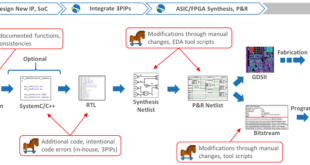In today’s digital-first era, the internet plays an integral role in both personal and professional spheres. However, this interconnectedness comes with a price: the proliferation of cybercrime. The 2023 Global Cybercrime Report offers valuable insights into the state of cyber threats worldwide, highlighting the diverse risk landscape faced by nations globally.
Understanding Cybercrime
The internet has become an indispensable part of our lives, but this interconnectedness comes with a cost – cybercrime. As we conduct business, learn, and connect online, we also become potential targets for malicious actors. Recognizing this risk, Proxyrack analyzed various factors to identify the nations most vulnerable to cybercrime.
Cybercrime encompasses a wide range of illicit activities and poses a significant global threat. As society becomes increasingly reliant on the internet for various tasks, cybercriminals have found new opportunities to exploit vulnerabilities. Despite efforts to enhance cybersecurity measures, the threat of cybercrime persists, necessitating a proactive and comprehensive approach to defense.
The Cybercrime Risk Landscape
The Proxyrack report employs a rigorous methodology to assess the global cybercrime risk landscape, taking into account factors such as digital development, legislative frameworks, and cybersecurity exposure. This evaluation yields comprehensive risk scores for countries worldwide, providing valuable insights into their susceptibility to cyber threats.
High-Risk Countries: A Closer Look
Certain nations, such as Panama, Thailand, and Belarus, face heightened cybercrime risks due to factors like poor digital development and inadequate cybersecurity measures. These countries serve as examples of the challenges posed by cyber threats in regions with significant vulnerabilities.
The report reveals Panama as the country facing the greatest cybercrime risk, scoring a staggering 9.70 out of 10. This concerning score stems from a combination of factors, including:
- Weak cybersecurity infrastructure
- Low digital development level
- High Basel AML Index (indicating susceptibility to money laundering)
Thailand (8.83) and Belarus (8.78) follow closely behind Panama, highlighting the global reach of cyber threats.
Low-Risk Nations: Models of Cyber Resilience
Conversely, countries like Denmark, Sweden, and Finland demonstrate exemplary cyber resilience, boasting robust defenses and comprehensive cybersecurity strategies. Their low-risk scores reflect the effectiveness of advanced digital infrastructure and proactive legislative measures in mitigating cyber threats.
The report also identifies the nations with the most robust cybersecurity defenses. Denmark emerges as the global leader with a score of just 1.87. This exemplary performance can be attributed to:
- Strong emphasis on national cybersecurity strategy
- High digital development
- Low cybersecurity exposure index
Sweden (1.96) and Finland (2.00) join Denmark to form a Nordic top three, showcasing a commitment to online safety in the region.
Understanding the Metrics
Proxyrack’s report incorporates various metrics to provide a comprehensive picture of cybercrime risk:
- Basel AML Index: Measures a country’s vulnerability to money laundering and terrorist financing.
- National Cyber Security Index (NCSI): Evaluates a government’s implementation of cybersecurity regulations.
- Cybersecurity Exposure Index: Ranks nations based on their susceptibility to cyberattacks.
- Digital Development Level: Assesses a country’s information and communication technology infrastructure.
- Cyber legislations and laws: Indicates the legal framework in place to combat cybercrime.
Special Focus: Basel AML Index and Cybersecurity Exposure
Indices like the Basel AML Index and the Cybersecurity Exposure Index provide valuable insights into the financial and cybersecurity risks faced by different nations. Panama’s high score on the Basel AML Index highlights its vulnerability to financial crimes, while Belarus’s top ranking on the Cybersecurity Exposure Index underscores its susceptibility to cyber attacks.
Addressing the Indices
High scores on these indices signal significant challenges that must be addressed through stronger policies, better enforcement, and increased cooperation between the public and private sectors. Understanding the implications of these indices is crucial for developing targeted strategies to enhance cybersecurity at both national and global levels.
A Call for Vigilance and Collaboration
The Proxyrack report serves as a stark reminder of the ever-present threat of cybercrime. By understanding the vulnerabilities of different nations and the factors contributing to cyber resilience, we can work towards a safer digital future. This requires a collaborative effort from individuals, businesses, and governments to:
- Prioritize cybersecurity awareness: Educating users about online threats and best practices is crucial.
- Invest in robust cybersecurity infrastructure: Implementing strong defenses is essential to protect critical systems.
- Foster international cooperation: Sharing information and strategies can help combat global cybercrime threats.
The Impact of Digital Development and Legislation
The correlation between digital infrastructure, legislative frameworks, and cyber resilience is evident. Countries with robust technology and comprehensive cyber laws demonstrate lower vulnerability to cyber threats, emphasizing the importance of technological advancements and adaptive legal structures in safeguarding against cybercrime.
Conclusion
The 2023 Global Cybercrime Report underscores the importance of understanding global disparities in cyber resilience. From high-risk countries like Panama to low-risk nations like Denmark, the report highlights the critical role of advanced digital infrastructure and strong legislative frameworks in mitigating cyber threats. Moving forward, collaboration between nations, businesses, and individuals is essential to fortify defenses and ensure a safer digital future for all.
 International Defense Security & Technology Your trusted Source for News, Research and Analysis
International Defense Security & Technology Your trusted Source for News, Research and Analysis

